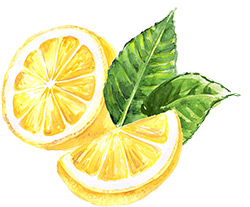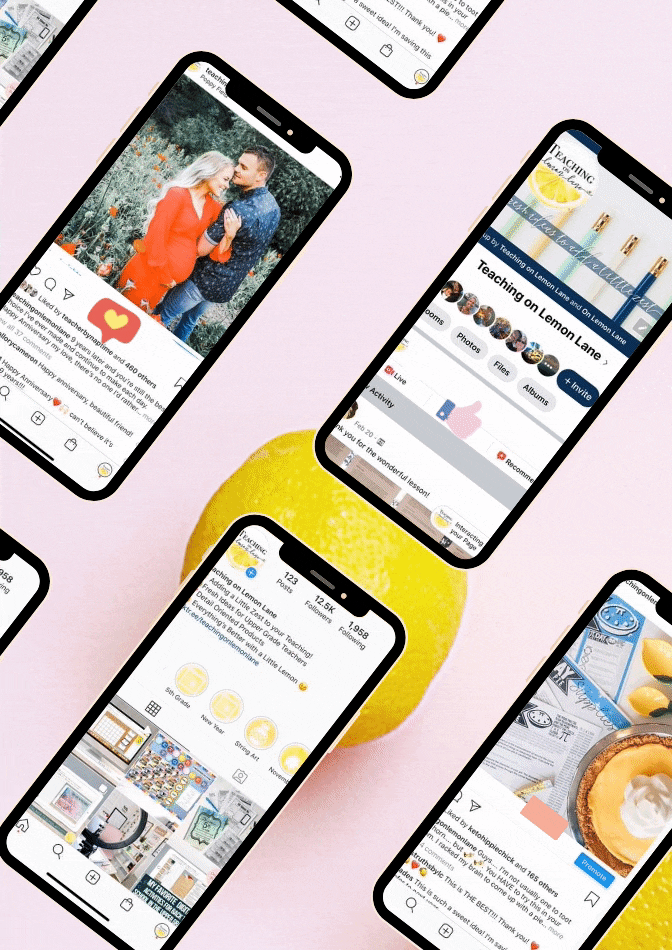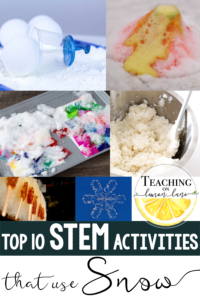 It’s February…. Typically, in Utah, that means 50 degrees. This year missed the memo. I know we aren’t the only ones with a surplus of snow. I figured instead of wishing away the day, pining for warmer weather… We may as well put the snow to work. This post is a compilation of fun S.T.E.M. (or) S.T.E.A.M. activities you can try with your class. I’ll give you a brief rundown, but if you are looking for more information or directions make sure to click on the link for the original author! Hopefully, these activities will help to chase away the winter-blues or winter-crazies. Literally, I’m going crazy. #cabinfever.
It’s February…. Typically, in Utah, that means 50 degrees. This year missed the memo. I know we aren’t the only ones with a surplus of snow. I figured instead of wishing away the day, pining for warmer weather… We may as well put the snow to work. This post is a compilation of fun S.T.E.M. (or) S.T.E.A.M. activities you can try with your class. I’ll give you a brief rundown, but if you are looking for more information or directions make sure to click on the link for the original author! Hopefully, these activities will help to chase away the winter-blues or winter-crazies. Literally, I’m going crazy. #cabinfever.
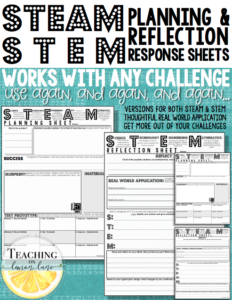
Stem and Steam graphic organizers that work with any challenge or experiment. Great for scaffolding students and setting them up for success.
Also you might be interested in my STEM / STEAM Graphic Organizers. These were created to be your one-stop-print-shop and go pages for ANY STEM or STEAM experiment or challenge. My issue with anything Stem in my classroom was the chaos and the disappointment at the end when I felt there was literally no educational takeaway. These graphic organizers are really great because they make the student, stop, think, plan, and relate. There is absolutely value in free play, but there is also value in scaffolding. The reflection page is my FAVORITE. If you want to see a full preview, or would like to purchase, click here.
If you would like to read more about them, check out this blog post!
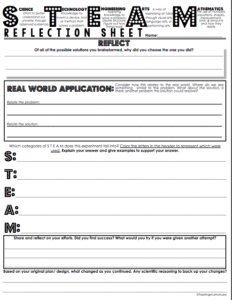
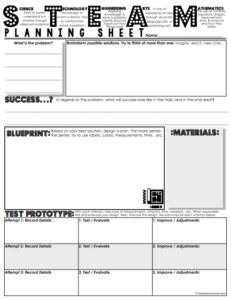
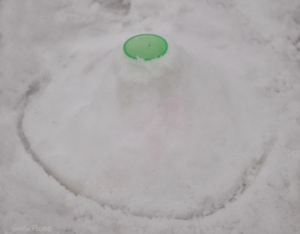
1. Make a Snow Volcano:
Now Before you roll your eyes at the suggestion of a #classic volcano…. I think there are some real learning opportunities here. First of all, if you teach states of matter or physical/chemical changes… there is a lesson, a GREAT discussion here. Second, this is one of those find the ingredients in your kitchen the day of type of activity. Last of all, I feel like you can take this a step further! Challenge your students to create or design a mechanism that will add the vinegar to the mixture instead of just dumping the vinegar into the cup by hand and watching the chemical reaction.
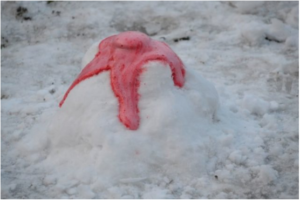 The design process can all be thought out and tested inside with water or something else, then actually put to the test outside in the snow. Another thought would be to have the students design a way to get one substance into the other substance without holding the up in their hands. *****I can’t think of a simpler, less messy, less clean-up type of environment to do the #classic Volcano experiment, than in the snow.
The design process can all be thought out and tested inside with water or something else, then actually put to the test outside in the snow. Another thought would be to have the students design a way to get one substance into the other substance without holding the up in their hands. *****I can’t think of a simpler, less messy, less clean-up type of environment to do the #classic Volcano experiment, than in the snow.
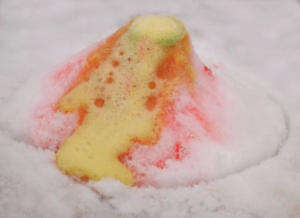
- Click here for more information on the activity
- Click here for the science behind the “explosion”
- Try these for inspiration on the vinegar add mechanism.
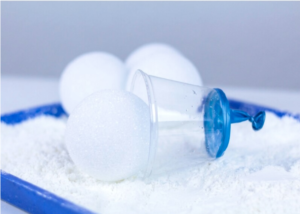
2. Snowball Launcher
Love this simple and cute idea for a snowball launcher. Students would have a blast designing and making adaptions to their launcher. I would then go outside and put them to the test with the simple challenge of creating something that will launch a snowball. If you want to take it a step further, I would do a follow-up activity where students have free reign on designing a snowball launcher. I’m thinking catapult/slingshots/rockets… 😀 A couple of things to keep in mind with this assignment. Try and keep the size of the snowball students are asked to launch consistent throughout. You could use a cookie scoop to help measure and ping pong balls for practice…. There are even actual snowball molds that would work! For those of you not living in the arctic Tundra, these pretend Snowballs could be a fun replacement or the simple Styrofoam balls you can find at any craft store. Give students the simple challenge of creating a launcher that can throw a snowball the furthest, or take it another step and add a target for accuracy!
The following videos are to spur inspiration for distance/accuracy launchers
- Pole Launcher
- Catapult
- Snowball Slingshot with Benedict Cumberbatch and Ellen… You’re welcome.
- Snowball Launcher
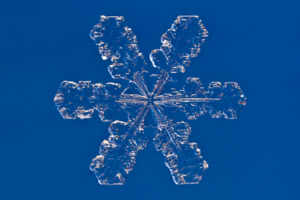
Preserve snowflakes using inexpensive glass slides, and hairspray!
3. Observing Snowflakes on Construction Paper
I remember doing this for the first time in Middle School. I understand why you would think this is an activity meant for younger grades, but I REMEMBER doing this. There are few things in life that really cause you to stop and ponder like observing individual snowflakes. This activity is filled with beauty and is awe-inspiring. When adding a stem spin to the activity, I think it could be fun to challenge students with prepping for the process. What do they need, what should the do, to be the most successful in this activity. For instance, can they come to the same conclusion that black paper or a dark paper with the most contrast in color will allow them to see the flakes the best? Will any of them think to freeze the paper, or keep the paper outside until it is cold to prevent the flakes from melting before you can observe them. Is there a design that will allow a higher quantity of flakes?…etc.
Want to take it a step further….. with a few inexpensive glass microscope slides and some cold hairspray, you can actually “preserve” the snowflake, and save its imprint! Click here for more on this activity.
Also if you teach symmetry, this is a great lesson to integrate it into!
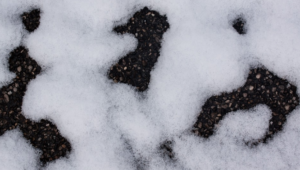 5. Design a Cooler
5. Design a Cooler
Super excited about this idea! Came to me this morning while I was trying to think of some fun ways to utilize all.this.snow. in the classroom! Give your students the challenge of creating a cooler that can keep snow from melting the longest. IF you teach conductors or insulators this is an AWESOME activity to demonstrate insulators… Which if you’re like me, I did a great job demonstrating and explaining conductors, but I wish I would have thought of this sooner to explain insulators.
I would do this by giving each student the same box or type of box. Shoe boxes are a great option, gift wrapping boxes, cheap Tupperware from the dollar store, or even cardboard shipping boxes that were mailed to the school. Check with your school’s secretary! Do your best to ensure each group or student has a box of similar material and makeup.
Again this is one of these activities that really lends itself to these STEM Graphic organizers I created. They are meant to be a guide that helps prompt the students to think deeply about the challenge at hand.
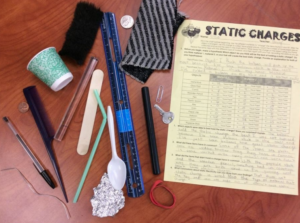
Students explore which materials are good conductors and which objects are not.
Next allow them to go wild with newspaper, magazines, bubble wrap, packing peanuts, masking tape, styrofoam, tinfoil, cotton balls, plastic wrap, balloons..etc! You could even use my static electricity activity and have students narrow down which materials would work best in their design!
You can give students free rein, limit their choices or use of materials to only 3 selections, limit the amount of each material, or even limit the weight or size of the end design.
When it comes to measuring and collecting data, make sure you take precautions about getting the same amount of snow in each cooler to start. Have the students decide what this will look like. Guide them to weigh the snow in the same container, even record starting temperature, start outside with snow placement then move inside..etc. Again if you don’t live in the never-ending winter zone, you could always freeze ice cubes of the same weight/ amount of liquid and test those in the coolers. Make sure to discuss with the class how, when, where, what time you will add the snow to the cooler. How often will you collect data? How will you know if a cooler is working or not? Is it possible to assign a numerical value to a successful cooler. **You could weigh the remaining amount of frozen snow after a certain amount of time, the “heaviest” could be concluded as the most successful….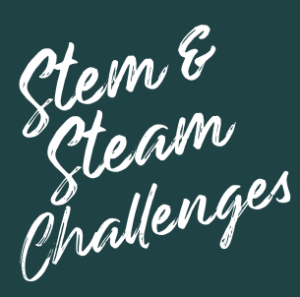
**I would start this experiment in the morning, that way you have adequate time to collect data and record findings throughout the day. You could put a student in charge to record data every 10 minutes for an hour and then switch. By an hour you should have a good idea of what’s working and what’s not.
If you try this one out… PLEASE PLEASE PLEASE tag me and let me know how it went!
6. Snow Density 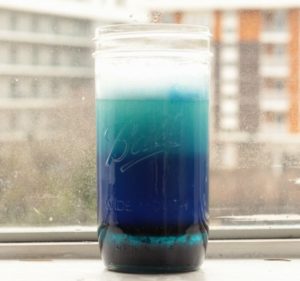
I love the idea from Lemon Lime adventures of creating a winter-themed density jar. I’m wondering if you could take it a step further and have students experiment with the density of snow, water, and solid ice! Check out this article from Science Friday discussing the density of snow. I also loved this process from Little Bins for Little Hands used for adding each liquid.
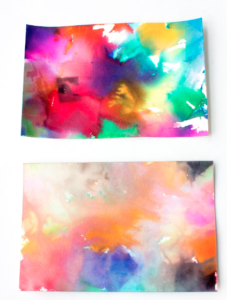 7. Tissue Paper and Snow Art Project
7. Tissue Paper and Snow Art Project
I LOVE this art project by Fireflies and Mudpies! Click on the link for directions and more information! This project is perfect for S.T.E.A.M. in the classroom. This project serves well for a discussion on states of matter. This is another project that costs nearly nothing in materials, however, the end result is beautiful and fun. 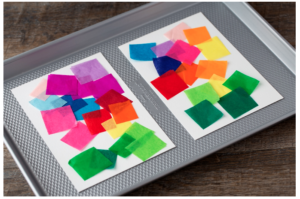
I would love to experiment with these. Adding fun zentangle designs using a bold black marker before or after the snow would be fun. I would also love to know what would happen if you used a crayon on the page before adding the tissue paper or snow. Would it react similar to an easter egg, or would the color soak through? Either way, your students are left with a beautiful and fun piece that utilizes the snow! 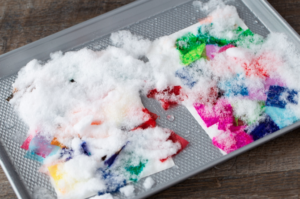
8. Frozen Bubbles
How amazing is this? To my understanding in order to have success with this activity the colder the better outside. Also, you will be better off taking a DIY approach to the bubble solution than sticking with store-bought. A great recipe and explanation of what is happening as well as ideas to create your own bubble wands using pipe cleaners can be found here!
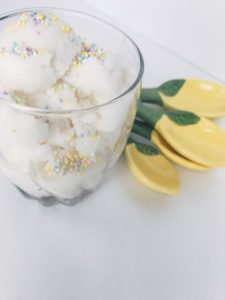 9. Snow Ice Cream
9. Snow Ice Cream
I feel like because it’s snow, and it’s ice cream, and technically you are doing some measuring… It totally counts as STEM. You could add another layer by having them create a container to mix the substance in, or add salt and discuss how salt actually drops the freezing level… Still a concept/ chemical change that completely blows my mind. Also if you haven’t made this…. Do IT. This is #childhood, and it’s also surprisingly delicious! Click on the title link for a step by step of this SIMPLE recipe. Literally, we’re talking 4 ingredients you can find in your kitchen at ANY time.
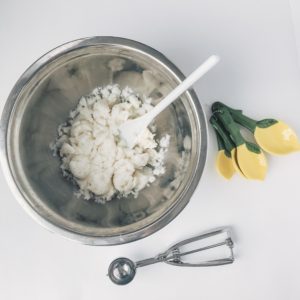
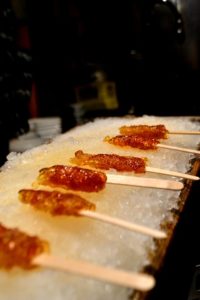 10. Sugar on Snow: Snow Candy
10. Sugar on Snow: Snow Candy
Watch out Laura Ingalls Wilder fans! Last, but not least…. SNOW CANDY. This one takes me straight back to childhood. I should have known I’d always be a foodie, my most memorable parts of childhood literature tend to be associated with food. Mostly sweets. Turkish Delight = Lion Witch Wardrobe, Chocolate Frogs, Butter Beer…etc = Harry Potter, Snow Candy = Home on the Prairie. Literally, I can remember reading this in 4th grade:
“Laura and Mary each had a pan, and Pa and Ma showed them how to pour the dark syrup in little streams onto the snow.”
– Little House in the Big Woods
***Couple notes: Make sure you use REAL Maple Syrup, not the Maple Flavored corn syrup in disguise. If not you will end up with a gooey mess that won’t take its shape. Real Maple syrup can be expensive…. look into the process of getting one container and you’ll understand why! The most affordable real Maple Syrup I’ve come across is the Kirkland brand found at Costco! This is also a great option.
Get the actual recipe used in the book by clicking here!
If you’re looking for a more detailed tutorial, click here!
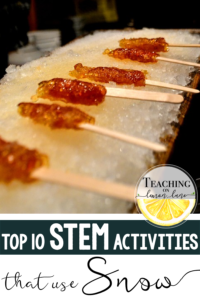
Can’t wait to see what you do! If your looking for more ideas or would like to share your own ideas please join our member-only Teaching on Lemon Lane Facebook Group!
I hope you enjoy the activities listed, I would LOVE to hear from you and how they go. Nothing brightens my day like being tagged in your classroom work on Instagram! Happy Teaching!

To stay up-to-date on new blog posts, freebies, exclusive promo codes, and sales… Join the Teaching on Lemon Lane Community! Pick any or all of the following to stay in the loop of all things Teaching on Lemon Lane.
- Follow @TeachingonlemonLane on Instagram
- Like Teaching on Lemon Lane on Facebook
- Join our exclusive Teaching on Lemon Lane Facebook Group
- Sign-Up for our Monthly Newsletter: No Spam, only make your life easy-peasy, lemon-squeezy goodness… Promise.
If you enjoyed this PLEASE SHARE! Sharing on Pinterest, Facebook, or tagging on Instagram is a simple, yet wonderful way to support the efforts of Teaching on Lemon Lane!

